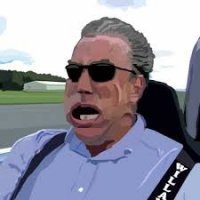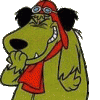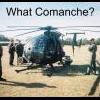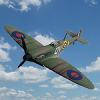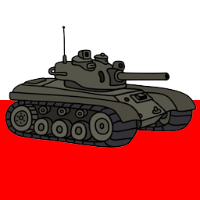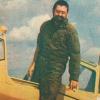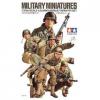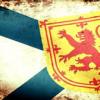Search the Community
Showing results for tags 'panzer iv'.
-
Return Rollers for Pz.IV (4 types) 1:35 OKB Grigorov The Panzer IV went through many changes during its production run with the goal of either improving the design, simplifying production, or a combination of both. This led to a difference in design of return rollers for the vehicle, which is an aspect that isn’t always catered for by injection moulded kit manufacturers. If you’re interested in getting the most realistic and accurate finish on your model, you may well be interested in one or more of these sets from manufacturer OKB Grigorov. There are four types, each with subtle and not-so-subtle differences between them. Each set arrives in a ziplok bag with a paper header stapled to it, and inside are eight casting blocks with two wheels per block that build up into one pair, so eight pairs in total, with four per side. You’ll need to check your references to see which type your chosen Panzer IV was fitted with, and you may well find that multiple types were fitted to vehicles that needed repair or replacements due to battle damage or equipment failure. Type 1 (S35006) – Flat central cap with a middle bolt and three more around the circumference. Type 2 (S35007) – Domed cap with outer ring and central bolt. Type 3 (S35008) – Recessed centre with central bolt and outer ring. Type 4 (S35009) – Domed cap with outer ring and central bolt, plus two diametrically opposed ribs running between hub and rim. Casting is excellent with each wheel joined to the block by a thin web-work that should be easy to remove and clean up along the wheel’s contact surface that holds up the returning track length. Types 2-4 even have visible circlips if you look closely enough, which is pretty impressive. Very highly recommended. Type 1 Type 2 Type 3 Type 4 Review sample courtesy of
-
Hi all, So I thought I'd start a thread for my build - I'm intending to build this (once it arrives): HobbyBoss Panzer IV B, kit no. 80131 I've also got some crew as I think it helps with the scale, though I'm not sure about my painting skills: Depending on time, etc. I was thinking I might make a little diorama with some "Battle of France" themed stuff - with some French infantry / AFV, but that will depend on how much of a glue bomb the Panzer turns into
-
Greetings! Here is my entry to the GB - Tamiya's recent new tool of the Jagdpazer IV/70. It looks to a be a straightforward build and does not appear to require that cement paste render seen on a lot of German AFV's. This will be a place holder at present as i am still finishing off a couple of builds for the Pacific GB. I plan to do the version with the "ambush" camo as in the last picture. Thanks for looking, Cheers Greg
- 80 replies
-
- 10
-

-
Hi all, Like a few others who have posted recently this is my contribution to the ongoing and excellent Panzer IV GB, please do not judge the GB my the meager standards of my model but pop along and have a look as there is some excellent modelling going on. This is my first 1/35 armour in a very long time and on the whole I enjoyed it, I will however NEVER enjoy repetitive road wheel! Any way enough waffle here are the pics; For those of you interested here is a link to the WIP; Thanks for looking in and all comments and criticisms are gratefully received. Craig.
- 10 replies
-
- 15
-

-
Hi Everyone, Really looking forward to this and have decided to go way outside my comfort zone and decided to take on a Dragon 😮 Have recently built the Tamiya Panzer IV Ausf J so will be really interesting to see what the differences are between the two. The first and most obvious one is ....... LOTS OF PARTS! OMG the box was packed. Feeling a bit nervous now! The detailing looks good and the pre moulded zimmerit looks excellent. I’m quite pleased that they are rubber band tracks, the MENG single link tracks on my Panther Ausf A Late are sending me round the twist. Out with the family tomorrow but will be starting to open the bags on Sunday. Will be OOB and a three colour paint job. Thanks for looking and good luck to everyone in the STGB 🙂
-
Hi all I am still cracking on with the other build even though I have gone silent for a while cause real life happened. Starting from tomorrow the builds should pick up momentum because I will be officially on leave. Anyhooo the idea here is to build a little dio with a tiger 1 and the panzer iv in 35.The crews standing around taking a rest and onr big mouth member taking it on himself to discuss "that girl in France" everyone hanging on his every word. Will post pics as soon as we start the build. Regards: Shaun
-
Done is a very loaded word. However, I'm calling time on this one. A model of firsts: Using of pigments. Individual link magic tracks. 3-tone camo. There's nothing like close-up photos for showing up all the imperfections 🙂 Things I learned. Don't be scared of individual tracks - they weren't too bad in the end. You can learn loads from YouTube. How much smaller the Panzer IV is than a Panther. Oils are great. Happy for any constructive comments 🙂 Just do it, and enjoy it! On to the Meng King Tiger!!!
-
First post, so Happy Christmas, and please be kind 🙂 Not quite a build thread, but a few pics from my Panzer IV journey. I'll preempt a few comments 🙂 I'm sure that the colour-scheme and decals are wrong. It's not meant to be any specific theatre. I just wanted to try out the classic 3-colour camo scheme So this is what I started with... Although I got the PE with the kit, I decided not to use it... The detail on this kit is pretty impressive - even though it's going to be hidden in the turret!!! Mostly built and ready for some paint... I'd really forgotten how they loved their road wheels!!! The standard Tamiya dark yellow, and some rubber on the road wheels, and we're ready to start playing... My first 3-colour camo! Wow, that looks bright... Some 'buff dusting', a few tools and a bit of chipping... A few oils, then time for the magic tracks... Not perfect by any means. Happy for any constructive criticism. Will hopefully have it completed by the new year. Happy Christmas!!! 🙂
-
Back in October of last year Enzo gave us a start date for the second AFV only Single Type Group Build on Britmodeller - for Panzerkampfwagen IVs and closely related AFVs. Well in only a few hours this GB will be starting! It only seems like two minutes since I posted that announcement about the start date last October! It would be great to have as many modellers taking part as possible - so if you'd like more details they can be found here. Kind regards, Stix
-
Hi all, you may have spotted this in the backaground of my recent post of the Panther. Really fun kit to build following my Hobby craft rule and only £16. It’s an old kit and feels like it but goes together really nicely, better than the Panther did. So built straight out of the box and then finished with Tamiya paints, weathering powders and oil paints. Painted with hairy sticks and built up with three coats of heavily thinned color. Used humbrol gloss and matt varnish. I’ve got an Panzer IV Ausf J, broke the hobbycraft rule 🙂 for the upcoming group build, really looking forward to it. Also working on a King Tiger in the works, still not happy with the Tiger 1 pics so will be doing them again before posting.
-
I'm finally managing to scrape together some modelling time after starting a new post in January(!). I'm currently building a Tamiya Panzer IV H in 1/35 (35209) and have a 1/35 Dragon IV G in my small stash (6363) but I thought it would be a nice idea to build up a 1/48 and 1/72 scale Panzer IV just for the hell of it / scale comparison / I should be at least able to find time to build a 1/72 tank sometime soon! So could you tell me which are the best (without being stupidly priced) 1/48 and 1/72 scale Panzer IV's* ? Thanks! *Any version will do.
-
This is a 1/35 model made by me last year. This is an Academy KIT no.13234. I made it as moving model, and made side hatch opening. All the parts are original from the kit. Thanks for the comments in advance.
-
There are plenty of 72nd scale kits of this most numerous German WW2 tank and each one has its own afficionados. Do you think is the new Modelcollect 72078 any improvement over the well established offerings by ESCI/Italeri, Hasegawa, Dragon and Revell? Cheers Michael
-
Panzer IV Ausf.H Update Set 1:35 Eduard for Academy Kit (36382) The new tool Panzer IV from Academy was a welcome new kit of the Panzer IV. Now Eduard have brought us an update set for the kit. The first parts to be replaced are the front track fenders. There are new mounting plates for the spare track links mounted on the front of the vehicle, new equipment racks for the side, new mounting parts for the pioneer tools and other parts mounted to the hull. New read track fenders are alos supplied along with the engine intakes and exhaust mounting brackets. Review sample courtesy of
-
Panzer IV PzKpfw IV Auf. H Ver MID (13516) 1:35 Academy via Pocketbond The Panzer IV was a German medium tank, and most widely used German armoured vehicle of WWII. It would see action in all fronts for the Germany Army and was the only tank to see continuous service for the Germans in WWII. There were many versions of the Tank throughout WWII. The Auf H version began production in 1943. Glasis armour was improved by making it a single 80mm thick plate. On the sides of the hull and turret spaced armour plates (5mm & 8mm) were added to defeat hollow charge warheads. The roof of the tank was reinforced from 10mm to 16mm armour, and 25mm in places. The extra armour resulted in about 2500kgs of extra weight and a reinforced final drive train with higher gear rations was added. The tank had the 75mm KwK 40/L48 main gun. The Kit This is a brand new tooling from Academy arriving on 9 sprues of plastic and still with the rubber band style tracks. Unlike a lot of AFV kits which arrive with a one part hull and single part main deck, with this kit you have to make these parts up. The lower hull is made up from a bottom plate, two sides, a back and two internal bulkheads. A front half plate is added along with the front top sloping plate, and an additional rear cover plate is also added. To the side the drive gear boxes are added along with the suspension carrier units (4 each side). The road wheels (8 each side) are then made up and added along with the drive sprockets and idler wheels. 4 return rollers are also added to each side. The flexible tracks can then be added. This now completes the lower hull. For the upper hull the front plate for the driver and machine fun positions is added to the main centre section along with the front fenders and the rear engine deck. The engine deck is made up from 5 parts and includes detail under the louvres. Once completed this can then be added on to the main hull. Additional parts are then added to the rear of the tank, with stowage for extra track links and the exhaust system being added. Parts are then added onto the sides of the tank to take the side plates. Racks are also added to take spare road wheels. Additional spare track links are added to the front of the tank, along with the driver's and machine gunner's hatches. Attachment points are added to the side plates and then these can be mounted to the tank. Construction now moves onto the turret and gun. The single part barrel is added to the mantle with a breach part going the inside. External mounting parts are fitted over the barrel and then the 3 part muzzle brake is added. There are two different muzzle brake styles provided, however there is no information on which to use so the modeller will have to consult their references. The gun is fitted to the lower turret ring and then the main body of the turret is fitted over it. Additional side armour panels are then fitted. The large rear turret bin is made up and added to the back of the turret. Side hatches are also then fitted. Next up the mounting points are fitted for the stand off armour plates, along then with the plates themselves. The commanders copula and machine gun are then made up and added. The turret can then be fitted to the main hull. Markings From the box you can build one of three tanks from the 12th SS Panzer Division in Normandy 1944. A nice inclusion in the decals is textured decals to apply for the Zimmermit before painting. Conclusion This is a great new tool from Academy of the import German Panzer type from WWII and will be welcomes by many modellers. It also seems to be offered at a good price point for a new tool Very highly recommended. Review sample courtesy of UK Distributors for
-
Sd.Kfz.161 Panzer IV Ausf H/J Kagero Top Drawings The Panzer IV was the mainstay of the Wehrmacht tank forces for much of WWII and was in production throughout the war. Over 9000 were built, in ten major versions and numerous sub-marques and specialised variants. The Ausf.H was the most numerous version produced, with a total of 3775 built, due mainly to the slightly simplified construction. The Ausf.J was the last main production model and was further simplified to improve the mass production of the type. 2970 of this model were produced by the end of the war, out of a planned 5000. This latest title in their Topdrawing series, Kagero has given the modeller and historian a mine of visual information on the Panzer IV Ausf.H and Ausf.J. Consisting of thirty one pages, this is very similar to the 3D Drawing series but without the range of colourful renderings, this book is filled with line drawings. This actually makes it easier to see what’s what as you’re not distracted by the colour schemes, although to the end of the book there are eight pages of colour side views, with the variations of colour schemes used on the H and J models. Each line drawing is beautifully done. Each page has three of four views of the tanks, including the underside of the hull, various equipment states, such as Schürzen and its attachment points, aerial positions, wheel types, exhaust systems, and cupola types. Included with the book is an A1 sheet with line drawings of the Ausf.J version on both sides, covering all angles of the tank in 1:16 scale. Shame there isn’t a similar sheet with the Ausf.H on it though. There is also a sheet of masks for the crosses, catering for the different styles, and a selection of tank unit identity numbers Conclusion This is a great book, and one that aficionados’ of the Panzer IV must have in their collection. For the modellers that have one of Trumpeters big 1:16 kits then this book will also be a very useful reference for getting all those details just right. Review sample courtesy of
-
Hello there, this section isn't very big here on the forum, but I've got this project doodling along in the background. Picked up a HL no S or S 27Mhz Panzer IV and am doing a few modifications that some others may like to see. The pictures mostly speak for themselves, please comment or ask questions. It all starts with these and they just happen to fit perfectly inside the 8 screw sections that keep upper and lower hull together. Battery access will be by removing the upper hull. fire in the hole, lol adding a piece of steel coat hanger wire helps to centre the magnet keep checking for fit and make SURE the magnets are pulling each other and not pushing
-
Panzerkampfwagen IV Ausf D/Tauch HobbyBoss 1:35 History The Panzerkampfwagen IV (PzKpfw IV), commonly known as the Panzer IV, was a German medium tank developed in the late 1930s and used extensively during the Second World War. Its ordnance inventory designation was Sd.Kfz. 161. Designed as an infantry support tank, the Panzer IV was not originally intended to engage enemy armour—that role being allocated to the Panzer III. However, with the inadequacy of the Panzer III becoming apparent and in the face of Soviet T-34 tanks, the Panzer IV soon assumed the original role of its increasingly vulnerable cousin. The most widely manufactured and deployed, fully turreted German tank of the Second World War (not including Germany's main assault gun) at some 8,500 examples, the Panzer IV was used as the base for many other fighting vehicles, including the Sturmgeschütz IV assault gun, Jagdpanzer IV tank destroyer, the Wirbelwind self-propelled anti-aircraft gun, and the Brummbär self-propelled gun. The Panzer IV saw service in all combat theatres involving Germany and was the only German tank to remain in continuous production throughout the war, with over 8,800 produced between 1936 and 1945. Upgrades and design modifications, intended to counter new threats, extended its service life. Generally, these involved increasing the Panzer IV's armour protection or upgrading its weapons, although during the last months of the war, with Germany's pressing need for rapid replacement of losses, design changes also included simplifications to speed up the manufacturing process. After manufacturing 35 tanks of the A version, in 1937 production moved to the Ausf. B. Improvements included the replacement of the original engine with the more powerful 300 PS (220.65 kW) Maybach HL 120TR, and the transmission with the new SSG 75 transmission, with six forward gears and one reverse gear. Despite a weight increase to 16 t (18 short tons), this improved the tank's speed to 39 kilometres per hour (24 mph). The glacis plate was augmented to a maximum thickness of 30 millimeters (1.18 in), and the hull-mounted machine gun was replaced by a covered pistol port. Forty-two Panzer IV Ausf. Bs were manufactured before the introduction of the Ausf. C in 1938. This saw the turret armour increased to 30 mm (1.18 in), which brought the tank's weight to 18.14 t (20.00 short tons). After assembling 40 Ausf. Cs, starting with chassis number 80341, the engine was replaced with the improved HL 120TRM. The last of the 140 Ausf. Cs was produced in August 1939, and production changed to the Ausf. D; this variant, of which 248 vehicles were produced, reintroduced the hull machine gun and changed the turret's internal gun mantlet to an external one. Again, protection was upgraded, this time by increasing side armour to 20 mm (0.79 in). As the German invasion of Poland in September 1939 came to an end, it was decided to scale up production of the Panzer IV, which was adopted for general use on 27 September 1939 as the Sonderkraftfahrzeug 161 (Sd.Kfz. 161). The Ausf D is the subject of this particular kit and one of the approximately 200 Panzer IIIs and IVs that were converted to be able to snorkel through rivers and lakes. The Model Having acquired the Tristar moulds around this time last year Trumpeters sister company Hobbyboss have finally started re-releasing the old Tristar kits. The first one arriving at BM Towers being the Panzerkampfwagen IV Ausf D/Tauch along with three others which will be reviewed in due course. Originally released by Tristar in 2006 the kit introduced new parts to the 2003 release of the Panzer IV Ausf C. The Tristar kit was pretty well received and although requiring a bit of care to build it was accurate with a very good fit of parts. Since Hobbyboss don’t seem to have altered the sprues in any way, (some sprues still have the Tristar name on them), the same should be able to be said of this release. The instructions are also the same, and whilst the modeller is able to effectively build four versions of the tank, the way the instructions are written, means that the modeller has to be very careful to use the correct parts for the particular version they choose. The four versions are; Panzer IV Ausf D – unconverted Panzer IV Ausf D Tauch – Combat mode Panzer IV Ausf D Tauch – Preparing to wade Panzer IV Ausf D Tauch – Fully prepared to wade Even the box art is the same as the Tristar packaging with the colour artists impression surrounded by a yellow boarder. As it is, all the parts are beautifully moulded, with the sprues and separate lower hull and turret in a sandy yellow styrene. There are forty eight sprues in total, if you include all the smaller sprues which are actually joined together. There are also three sprues of dark grey styrene for the track links, two of clear styrene, a medium sized sheet of etched brass, a length of copper wire and two decal sheets. There is no sign of flash anywhere, but there are quite a few moulding pips that will need to be cleaned up. This is definitely one of those kits where you’d be best to read the instructions beforehand and mark up the parts you are going to need to build up the particular version you intend to build. Since there are four ways to build this kit I will just write up the build for the fully prepared vehicle. Construction begins with the assembly of the thirty two road wheels, each of which is fitted with separate tyres followed by the individual suspension units, which are assembled from seven parts, ensuring that the correct parts are used as they are handed. Two pairs of road wheels are then glued to each suspension unit. The drive gearbox covers are then built up from three main parts and nine separate bolt heads, the bolt heads being at the ends of the parts that look like shell cases. The four piece sprockets are then fitted to each drive unit. The idler wheels are each made up from five parts, whilst each return roller consist of two parts. The lower hull is assembled next, with the sides, bottom, and rear bulkhead all separate parts. The hull is strengthened with the fitting of two interior bulkheads, whilst the hull sides are fitted with the individual bump stops. The underside of the hull is detailed further with the fitting of sixteen bolt heads and four brackets. The sprocket, idler, return roller and road wheel assemblies are then glued into their respective positions. The upper hull section is then detailed with the fitting of the front /front inner mudguard plates side armour panels, and viewing ports. These are followed by the fitting of the driver and machine gunners hatches, multipart machine gun mounting and frontal armour plate. To the rear the engine deck hatches, side and rear panels are attached, along with their associated grab handles, fittings and the rear mounted shackle brackets. The upper hull is then glued to the lower hull assembly, whilst the tracks are each assembled from ninety six of the one hundred and eight provided for each side. Back at e rear of the hull, the mudflaps are fitted with the reflectors before being fitted to the rear of the fenders. Also at the rear, the two exhausts are assembled, each from four parts, before being fitted to the rear bulkhead. The main gun/mantle is made up from twenty two parts, as the kit includes the breech section and spent ammunition basket. The gun assembly is then fitted from the front to the turret, to which the upper turret plate is then fitted, along witht eh loaders hatch. The kit provides a simplistic turret floor, which is attached to the lower turret section by three legs, two of which are fitted with folding seats, whilst a third seat is fitted to the lower turret section. With the floor attached the commanders cupola is made up from fourteen parts, before being fitted to the rear of the turret. The rest of the turret hatches are then glued into position, along with the various details, such as grab handled, handrails, Schürzen rails, vision ports and eye bolts. The port fender is then fitted out with the gun cleaning rods, jack rest block, track tool, shackles, fire extinguisher, step and various pioneer tools. The starboard fender is fitted out with the main jack, more pioneer tools, spare track links and the brackets for a long square post, (this item is not included in the kit, nor are there any references to as to what it is made of). The towing cable is then assembled and fitted to the brackets on the rear bulkhead and the kit finished off with the fitting of the turret. Decals The two small decal sheets are nicely printed, with good opacity and a nice thin carrier film. They provide the markings and unit ID codes/emblems for five different tanks, these being:- Panzer IV Ausf D, of 2nd Panzer Division, Semols, 1940 Panzer IV Ausf D, No.933 of 9./Pz.Rgt 18, Russia 1941 Panzer IV Ausf D, No.632 of Pz.Rgt. 18, Russia 1941 Panzer IV Ausf D, No.342 of 3./PZ.Rgt. 18, Germany 1940 Panzer IV Ausf D, No.231 of 3./PZ.Rgt. 18, Germany 1940 The second decal sheet also has Panzer IV Ausf D No.No.321 included, but this vehicle is not mentioned on the painting guide. Conclusion Whilst his is a very nice and interesting release, which when first produced by Tristar was pretty well received, it’s not without its problems. Not in the kit itself, but in the instructions. Great care will need to be exercised during the build, particularly in using the correct parts for the vehicle you wish to build. It’s also not one for the novice, but those modellers with a bit of experience behind them who should be able to produce a very nice model. Highly Recommended Review sample courtesy of
-
Hey All Hot on the heels of my Bf 110 Nightfighter, I present to you Tamiya's Golden Oldie 1/35 Pz.Kpfw.IV Ausf.J. Enjoy... Yes, I know that the paint scheme, markings and composition of the model are all incorrect for the Ausf.J version, however, I have an excuse ready... This had started off with three tone camouflage and a full set of side and turret skirts. I wasn't happy with the way the camo turned out (making it up as I went along might have had something to do with it), so instead of respraying everything, I decided "what the hell, why don't I try a winter camo?" So lets just consider this a depiction of a generic, nondescript German tank roughing it out, somewhere on the Eastern front. What can I say about the build? Its a Tamiya kit, although an old Tamiya kit at that. Aside from a lot of mold lines to clean up, everything went smoothly. This build was 99.9% out of the box, with only a few small scratchbuilt items. Firstly everything was primed with Vallejo Panzer Grey Primer*. Initial camouflage consisted of Model Master Dunkelgelb, Olivegrun and Schokladnbraun. This was subsequently over sprayed with quite thin flat white, all the while attempting to keep it patchy and random. The tracks were painted with Tamiya Dark Iron, a colour I find perfect for tracks, exhausts and other things that have oxidized way past simple rust. The spare tracks however, were treated to a light wash of rust colors. The entire tank was given various washes/filters using Vallejo Grey and European Dust Washes to tone down the brightness of the white and further the streaky, rough, patchy look of the colour. Tools and other bits were painted with Humbrol Metalcote Gunmetal and various Vallejo colours. Recesses and details were picked out with MIG Productions Dark Wash. After a quick Google search for "Panzer IV, winter camo" I came across a profile that suited the build and cut the appropriate markings off the (quite old, but still usable) decal sheet. Now you can't have a German tank in the Russian winter without that beautiful, dark Russian mud. This was achieved with none other than MIG Productions Russian Earth pigment with a little Dark Mud for variation. After an initial coating of dry pigments, they were mixed with Vallejo Flat Varnish (the thick stuff, not the airbrush ready one) and slopped on with an old rough brush. Just enough to look muddy, but not so much as to obscure detail. With the weathering finished, the lower half of the tank was lightly sprayed with gloss varnish to give the mud a nice wet look, while the upper half was shot with flat varnish. Overall, quite pleased with this one. First time doing a winter scheme and first time doing thick mud. Bad camo job + white paint = pretty darn good looking winterized Panzer IV if I do say so myself *Note: With reference to Vallejo Polyurethane Acrylic Primers, you must, I stress must let these primers dry for at least a full day or two, or until they no longer give off a strong smell. I see too many people bashing these primers. They are quite good if you give them a chance and treat them properly. If you let the primer fully cure, not just dry but cure, you will have very little to no problems. Thanks for looking Regards ANS
- 10 replies
-
- 16
-

-
Hello all Although I've built a few armour kits before, this is the first one I feel happy enough with to share on the forum, so please be gentle! This is Italeri's Panzer IV Ausf F2 in 1/35. It was airbrushed with lightened Tamiya acrylic XF63 German Grey, then weathered with a mix of oils, drybrushing and pigment powder, and with an HB pencil on the wheels. Hope you like it, comments always welcome. Adam
-
Can any of you point me in the direction of a cheapish source for a pair of Tiger or Panzer IV hulls/chassis in 1:144, probably should be the early marks, without the sloping armour. Looked at world of tanks(Takara), Can.DO(Dragon) and CGD, but it seems a shame to fork out about £10 a go for them only to butcher them to go under a Leopold 28cm railway gun. My orginal find of diagrams of the K5 on tracked vehicles would seem to have suggested a panzer IV hull just by the number of road wheels, no someone has pointed me to another drawing showing what the K5 might look like mounted on a pair of Tiger tank hulls. http://modelbox.free.fr/photoscopes/K5/K5_Tiger.JPG
- 1 reply
-
- 1:144
- Leopold 28cm
-
(and 2 more)
Tagged with:
-
Panzer IV Ausf J Etch Sets for Dragon ET Models 1:35 History Despite addressing the mobility problems introduced by the Ausf H model, the final production version of the Panzer IV, the Ausf J was considered a retrograde step from the Ausf. H. Born of German necessity to replace heavy losses, it was greatly simplified to speed production. The electric generator that powered the tank's turret traverse was removed, so the turret had to be rotated manually. The space was later used for the installation of an auxiliary 200-litre (44 imp gal) fuel tank; road range was thereby increased to 320 km (200 mi). The pistol and vision ports in the turret were removed, and the engine's radiator housing was simplified by changing the slanted sides to straight sides. In addition, the cylindrical muffler was replaced by two flame-suppressing mufflers. By late 1944, Zimmerit was no longer being applied to German armoured vehicles, and the Panzer IV's side-skirts had been replaced by wire mesh, while to further speed production the number of return rollers was reduced from four to three. These three sets are for the rather difficult to find Dragon Smart Kit. There doesn’t seem to be any crossover between the sets so the modeller can add as much or as little extra detail to the kit as they see fit. As usual each set is contained in a thick poly bag with a card header and the instructions on the standard green A4 sheets. They are pretty clear and concise, but careful reading will reap rewards when it comes to fitting the sub assemblies to their respective positions. Some kit detail will need to be removed before adding the etched parts, plus brass and styrene rod will be required from the modellers own stock. Latest Production fenders. (EA35-069) As the name suggests, this set provides the fenders for the hull sides. Each fender is made up of upper and lower skins, bracing struts, access panels with locking clamps, plus various rivet and screw details. The front and rear mudguards are separate sub assemblies and require hinge rod to be made for each one, probably best to use brass rod for this. A template for these is provided on the instruction sheet. One the mudguards are fitted there are four very small springs provided to be attached to the outside of each assembly, attaching the mudguards to the fenders. Basic Set (E35-089) As per usual for ET Models basic sets, they are anything but basic. The set contains three sheets of relief etched brass, each of differing sizes. Sheet A Contains various strap clamps, and tool tie down clamps, a replacement storage box for the spare wheels, this item will need a length of plastic rod to complete the assembly. There are optinal clamps for the wheel spanners depending on whether an early or late production batch is being built. There are also new track pins and clamps for the spare track links, detailed parts for the headlamps, new clamps and supports for the fire extinguisher, new bracket and straps for the ammunition box on the port side foreward, and new straps for the gun cleaning rods. The kit strengthening brackets around the turret ring are removed and replaced with finer brass parts, whilst the driver and machine gunner hatches receive replacement internal locking mechanisms. The turret bustle is provided with new fixed and moveable parts for the lid, as well as a new locking mechanism. At the rear of the vehicle replacement exhaust silencers are rolled and detailed with additional brass parts before fitting to the model. Sheet B contains additional tools, brackets and clamps, plus new handles, winder, and brackets for the jack. The turret hatches on either side receive new locking clamps. The bustle lid on sheet A has additional strengthening brackets for it on this sheet. The commanders cupola is also detailed up with new hinges and locks for the hatch, the external cupola ring is also replaced, plus there is a complete machine gun mount made up entirely of parts from this sheet. Sheet C is the smallest of the three in this set, and as such has the least number of parts. There are four parts that make up into what I can only call gutter type assemblies which fit over the hatches on the turret sides. Only two are required for the model, and the design used will depend on whether an early or late production tank is being built. There are five support brackets for the cupola ring and the rest of the sheet contains different length chains for the pip pins fitted to various brackets from sheet A. External protective screens, Schurzen. (E35-091) This two part set provides all the parts to make up the two large mesh side screens and the solid turret screens seen on late production batches. The set comes complete with four sheets of relief etched brass, plus two lengths of brass tube. The lettering that identifies each sheet appears to continue on from set E35-089 described above so to prevent confusion I’ll continue this theme. Sheet D contains all the brackets, support arms, strengthening webs, hinges and panels that go to make up the shield around the turret sides and rear. The main support brackets don’t look that complex, but they will have to be bent into the correct shape and fortunately ET have provided a guide for each sized assembly. The hinges will require brass or plastic rod to finish them off and to allow those particular panels that are moveable to be posed open, so that the hatches on the turret sides can also be opened. Sheet F contains two mesh parts that are required to finish off the turret shield and these are the mesh screens that go on top either side of the turret bustle storage. The rest of the sheet provides all the brackets, supports, clamps, and fixings that, in conjunction with the brass rod, all goes to make up the main mesh shield support structure. Sheet G provides the alternative anti grenade screens that sit on top of the tanks fenders these are made up of the mesh screens, surrounds, which have projections which need to be curve to sit on the brass tubes, and angled supports. Additionally the hangers for the for the main screens are also contained on this sheet. Sheet H provides the six main screens with their respective upper and lower strengthening beams. The mesh is beautifully done with over and under weave that is still very fine. Don’t be afraid to leave on or two panels off as they didn’t seem to stay attached long, either through loss or the crews removing them for some reason. Conclusion Once again ET Models have produced a stunning selection of etched brass for the Panzer IV Ausf J, even though the kit doesn’t seem to be that easy to find. If you are lucky enough to have one or perhaps find one from the Far East then these sets will really add some fine detail, not to mention the distinctive screens. If using all three sets, not only will you need an extra gallon of patience and a steady hand, but the eyesight of a hawk, or at least a very good magnifier. When complete the completed model should look stunning. Highly recommended. Available from White Ensign Models in the UK Review Sample courtesy of


